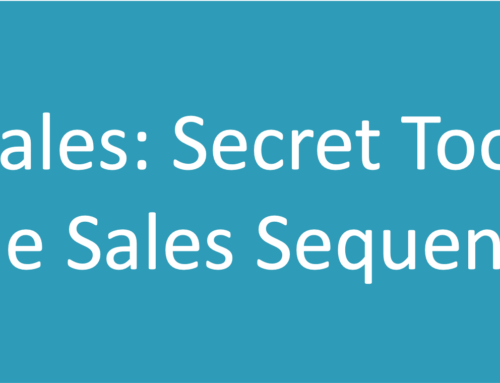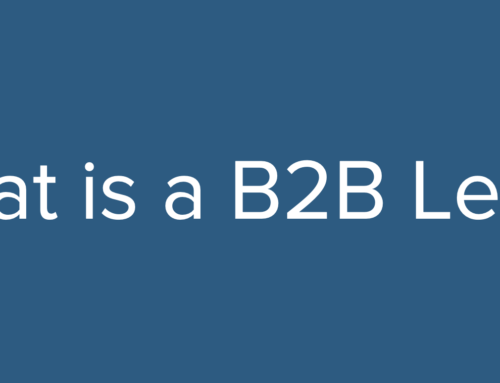How Organizations Waste Perfectly Good Leads
So you’ve just finished an amazing campaign that generated a ton of interest and, more important, qualified leads! You expect sales to be closing left and right, but that is not happening. Why not? Why are these fantastic qualified leads not producing the sales results you expect?
Well, you are not alone.
How organizations waste perfectly good leads is simply by failing to follow up with prospects immediately.
Research clearly demonstrates that 35%-50% of sales go to the vendor that responds first. So what prevents your organization from being the first to respond?
Over time, I have observed the following four common obstacles that occur within organizations that fail to respond to leads immediately:
- Lead Bottlenecks
- Failure to Deliver Leads to the Right Person
- Failure to Deliver “Actionable” Leads that Inspire Follow-up
- Lack of Accountability
How organizations waste perfectly good leads: Failure to recognize and eliminate lead bottlenecks
Here, I am going to tackle the first point – lead bottlenecks. At the end of this article, you can explore the links to the discussions of the remaining three obstacles.
Now, let’s dig into the various ways organizations create (or simply ignore) bottlenecks that limit or completely block lead delivery and follow-up.
Come and Get It Approach
One way organizations create bottlenecks is by loading a list into a system where a salesperson must “come and find” their leads. This is passive lead management, and you are relying on salespeople to (a) spend their time logging into a system, (b) browse leads and look at each one to determine value, and (c) likely deal with a growing list of leads that becomes more and more unmanageable.
A growing percentage of B2B companies place their leads directly into their CRMs. In fact, recent GrowthPoint research indicates that around 50% of those companies surveyed do this. That is certainly not an error in itself. However, if your CRM has no automated lead management process that gets a qualified lead to sales immediately along with the full context of that lead (why the salesperson is getting the lead and actionable items), then don’t expect this CRM approach to work.
Lists, Spreadsheets, etc.
Your marketing tactics frequently produce “lists” of good leads (or sometimes just contacts that may or may not really be leads). These lists may come from trade shows, media programs where you rely on the media partner to provide you the response list, or other activities. These “lists” present two distinct problems in terms of timely lead follow-up:
- First, rarely are these lists acquired and processed quickly, but instead are usually days or even weeks after the contact with a prospect. By then, you are likely just dead to that disappointed prospect who expected some follow-up.
- The other significant problem with these lists is that they are more likely to be presented without proper “grading,” meaning the lists fail to distinguish the hot prospects from those who might have early interest and those who are simply tire kickers. In these cases, the list is just a list!
Someone Has to Assign
This barrier is usually found where either (a) someone has a true control issue and just believes they have to see each lead and assign it, (b) there is very little effort put into proper lead qualification, (c) there is no proper segmentation in channel/sales territory management, or (d) this is just the “way we have always done it.” Regardless, if you have to send all possible good leads to one or more people to actually make lead assignments, you are going to delay lead response and greatly degrade your lead conversion to sales ratio. There will likely be prospects left waiting who will find someone else to buy from.
Research demonstrates that 35%-50% of sales go to a vendor that responds first.
We MUST further qualify those leads
The following scenario is a true story. A B2B company executed a demand generation tactic. A prospect completed a landing page and not only identified specific interest, but also checked a box saying they want to speak to a salesperson. What happened next? That B2B company, because of their existing lead follow-up process, sent that lead to a “pre-qualification” telesales group – to determine if that prospect was a good lead to give to sales – and failed to call that contact for a week.
If a prospect identifies their specific interest and says they want to talk to sales, send that lead directly to the right salesperson within one minute and expect that salesperson to call that prospect within 24 hours!
I am certainly not advocating sending unqualified leads to sales, and not all leads an organization generates will ultimately be qualified leads. However, an organization that executes marketing plans that can accurately collect specific prospect interest and intention can generate some “qualified” leads that require no further phone call or contact before sales reaches out to those prospects.
Related Articles
You are now ready to recognize and prevent these lead bottlenecks from blocking timely lead follow-up, but what else stands in the way? The following two related articles reveal three other possible obstacles that you should learn to recognize and eliminate:







[…] the first article in this series, How to Waste Perfectly Good Leads (Part 1), I introduced you to possible lead bottlenecks which may be preventing or limiting the timely […]
[…] even prevent timely lead follow-up and effectively waste perfectly good leads – lead bottlenecks (How to Waste Perfectly Good Leads – Part 1), and filing to deliver leads to the right person (How to Waste Perfectly Good Leads – Part […]